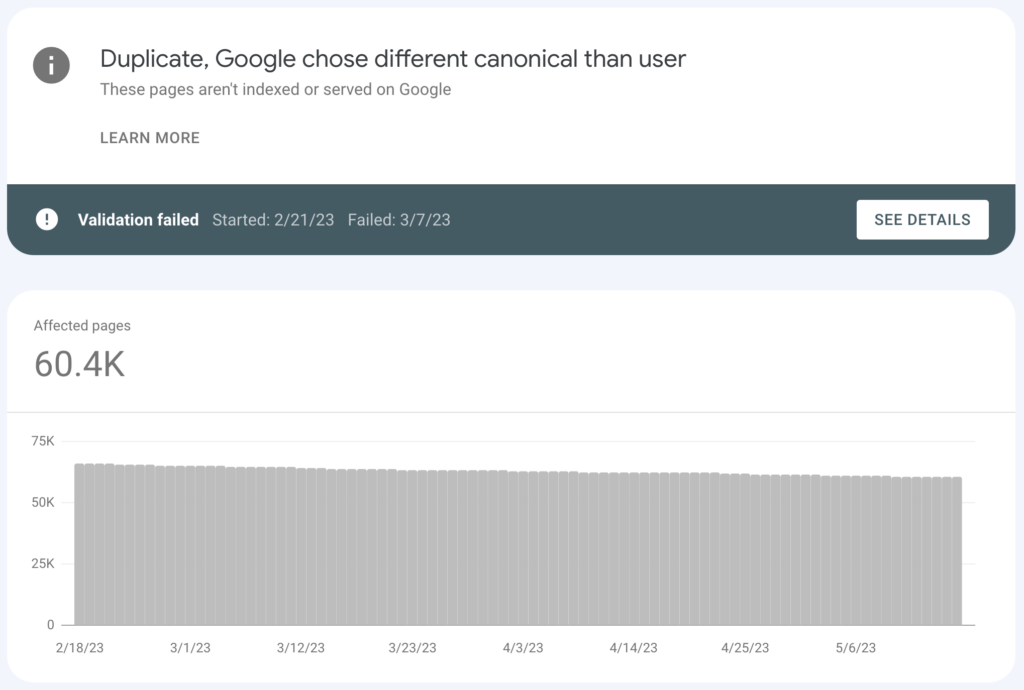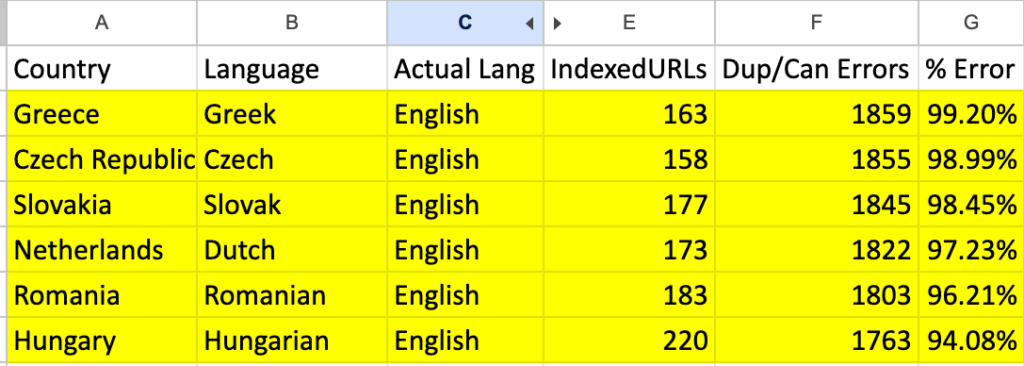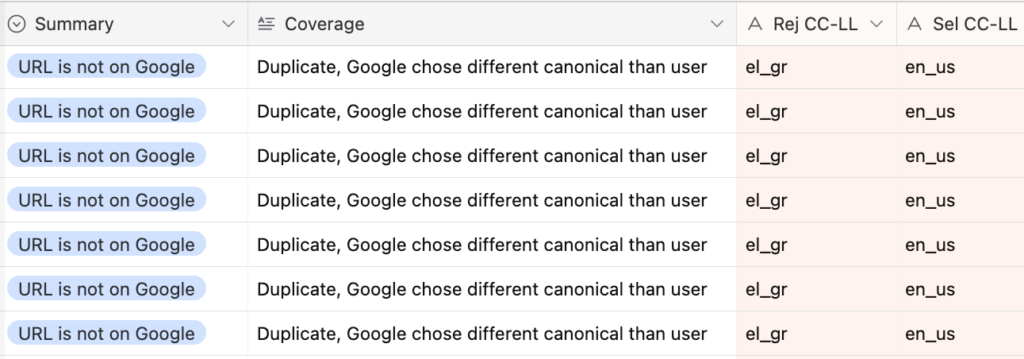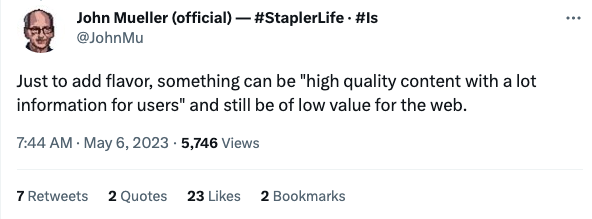Hreflang and Market Website Misalignment
June 15, 2023Google Updates Ping and Lastmod
June 27, 2023The Challenge of Aspirational hreflang Settings
Companies launch market-specific websites to target a specific market and sometimes Google may not understand their full intentions. They localize and personalize the content to better engage with those local consumers. Typically this market customization includes language, currency, content, lead forms, and performance KPIs for traffic and conversions. All of these customizations make a page unique to a market, which is the fundamental purpose of hreflang to indicate it is an alternate version of a page for a specific language or region.
But what happens when there are localization delays and the market team launches early without all the unique customizations, but the dynamically set hreflang has been coded to the expected language? We call these hreflang settings “aspirational hreflang settings.”
Remember, the purpose of hreflang elements is twofold. First, they are a method for site owners to state a specific webpage’s language or language region explicitly AND indicate that a URL has one or more equivalent (alternate) URLs with similar content but designated for another specific language or language region.
Is your French Language Website really French?
Let’s take a scenario where a market-specific website goes live before it is fully localized with local products and pricing but is not entirely in the local language. Developers add hreflang tags or XML sitemaps when the site goes live, assuming the hreflang will eventually match the final language.
What if a company launches a new site for Canada in English and French using en-CA and fr-CA hreflang, respectively? Any page that has yet to be localized in French will have a hreflang setting of fr-CA for French Canada since it will be at some point. Is this a valid use of hreflang? This is a very valid question asked to Google by a user.

The intention is valid, as described in this tweet from Jason, “We want to send French language preference Canadians to the French page. The problem is created since the pages are not yet in French. Jason asked if that was a valid option or if Google had another suggestion.
Google representatives did not respond, which is the case when the answer is obvious. No, you should never misrepresent the language on a page using hreflang. Unfortunately, Google cannot access your localization schedule to know when it will be in French. The page is in English, so technically, the hreflang tag language setting is incorrect and will typically be ignored. Commenters to the post and I suggested if you must launch now, leave the tags off and let Google sort it out. Ultimately, the future French version should not be released or blocked from search engines until localized.
Does Google care about the real language?
The situation in the tweet above was a localization gap and pre-deployment coding. But what about those companies who want to push the envelope with hreflang and try to target multiple markets with the same content but set hreflang to a different language to pass it off as local content? Google does a great job detecting language on a page, so trying to use hreflang to fool Google into thinking a page is in another language does not work. A few months ago, we had a self-serve client who discovered that Google cares about the true language of a web page when it removed most of the pages for these incorrectly set markets from its index.

This website has over 10k pages per market, with 1k pages representing definitions, customer overviews, and industry verticals covering 60 markets. We have deployed hreflang for all of them, but as shown above, nearly all of these “specialty pages” are not being accepted by Google.
Troubleshooting The Problem
Initially, we thought the hreflang was not working but confirmed that hreflang was set up correctly; Google was viewing the XML and still was not recognizing the URLs as being unique to each market. We kept digging and wanted to see if we could find any pattern in the type of URL or any market in Paris that was more of a problem than others. We ran the problem URLs through Screaming Frog using the Search Console API to get the full data set for each error URL.

Sort 1 – Rejected URL and Selected URL
The error description Google tells us they selected another “better alternate URL” so we wanted to see what Google selected as the alternate. What was interesting is the markets with the most errors, in this case, Greece, with nearly 100% of URLs replaced by the US. That was odd; why would Google replace a Greek language page with the US? We looked at the pages and found them all in English despite the hreflang being set to Greek.

We found a similar pattern with the Czech Republic website, where it was supposed to be in the Czech language, but the pages were also in English.

When we checked markets with the same language, like English, German, French or Spanish, there were errors but the alternate was the same language.


You Cannot Fool Google.
We found nine markets that were supposed to have unique local languages were, in fact, in English. We believe that with nearly 10,000 incorrectly coded URLs, Google does not trust the site’s hreflang submission. This resulted in a complete rejection of hreflang elements due to these incorrect language settings. Resulting in over 60,000 duplicate canonical errors.
The immediate corrective action was to correct the language settings for those nine markets from the incorrect local language to English. Interestingly, there was hesitation from the client, assuming it may negatively impact their SEO and local market traffic. Given these markets, each had less than 100 pages indexed; the current state was more of a negative impact than the corrective action.
The settings have been updated, and the new XML sitemaps have been pushed to Google for re-indexing. It seems Google now trusts their hreflang implementation as the number of duplicate canonical errors decreased, and the local market pages appeared in the search results.
Is the content helpful and quality by Google Standards?
A new challenge for us in getting hreflang to work is Google’s application of the helpful content Algorithm, which seems to happen before applying hreflang values. It can be a problem when Google’s systems believe the content on a page is not valuable and rejects it for more valuable content from other websites. As in the case above, the creator believes the content is valuable and serves a unique purpose, but is it really by Google’s definition?

Market Goals and Hreflang Frustrations
Many website owners are frustrated with Google and its apparent inability to understand their wishes. There are many complaints and posts of marketers’ frustrations with Hreflang’a’s limitations that do not align with their market-specific goals.

As a person who has worked on hreflang for many years and tries to explain the many challenges to website owners, I do believe Hreflang has done a great job of eliminating cross-market duplicate content by giving the pages a legitimate purpose, but it cannot solve everything. Too many marketers expect Google to understand their intentions and to do their bidding with limited signals or even the right content, creating misalignments to match hreflang to companies go to market strategy.
